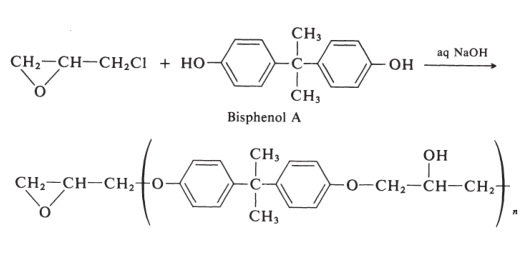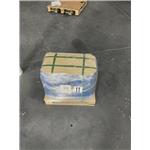Resin based on epichlorohydrin and bis phenol A. Oligomers may vary in molecular weight from 340 and higher. May produce
erythema multiforme like eruptions. The higher the molecular weight, the less sensitizing the compound.
Resin epoxy is white to straw slab
Resin epoxy is Surface coatings, as on household appliances and gas storage vessels; adhesive for composites and for metals, glass, and ceramics; casting metalforming tools and dies; encapsulation of electrical parts; filament-wound pipe and pressure vessels; floor surf
Epoxy resin is used in adhesives, surface coatings, electrical insulation, plasticizers, polymer stabilizers, laminates, surface coatings, paints and inks,
product finishers, PVC products, vinyl gloves, etc.; in the building industry, electron microscopy, and sculpture.
Epoxy resin is prepared by the following condensation reaction:

The condensation leaves epoxy end groups that are then reacted in a separate step with nucleophilic compounds (alcohols, acids, or amines). For use as an adhesive, the epoxy resin and the curing resin (usually an aliphatic polyamine) are packaged separately and mixed together immediately before use.
Epoxy novolac resins are produced by glycidation of the low-molecular-weight reaction products of phenol (or cresol) with formaldehyde. Highly cross-linked systems are formed that have superior performance at elevated temperatures.
Resin epoxy is a thermosetting resin based on the reactivity of the epoxide group. One type is made from epichlorohydrin and bisphenol A. Aliphatic polyols such as glycerol may be used instead of the aromatic bisphenol A. Molecules of this type have glycidyl ether struc
Strong skin irritant in uncured state.
Acetone, benzene, MEK, THF, toluene, xylene




